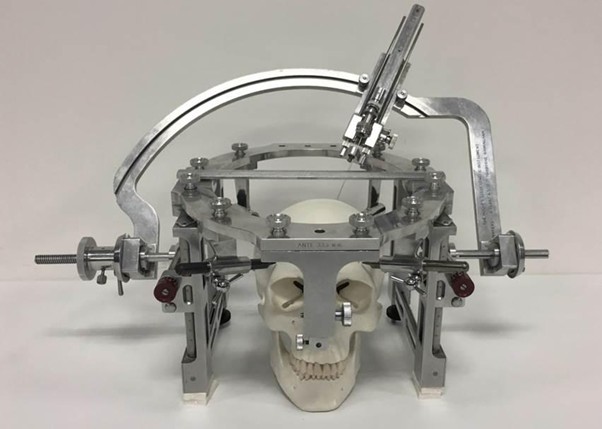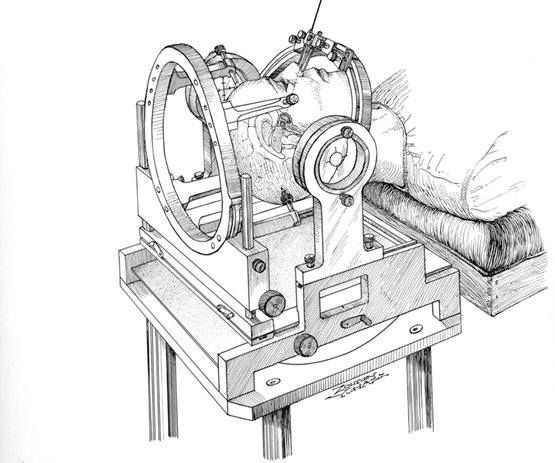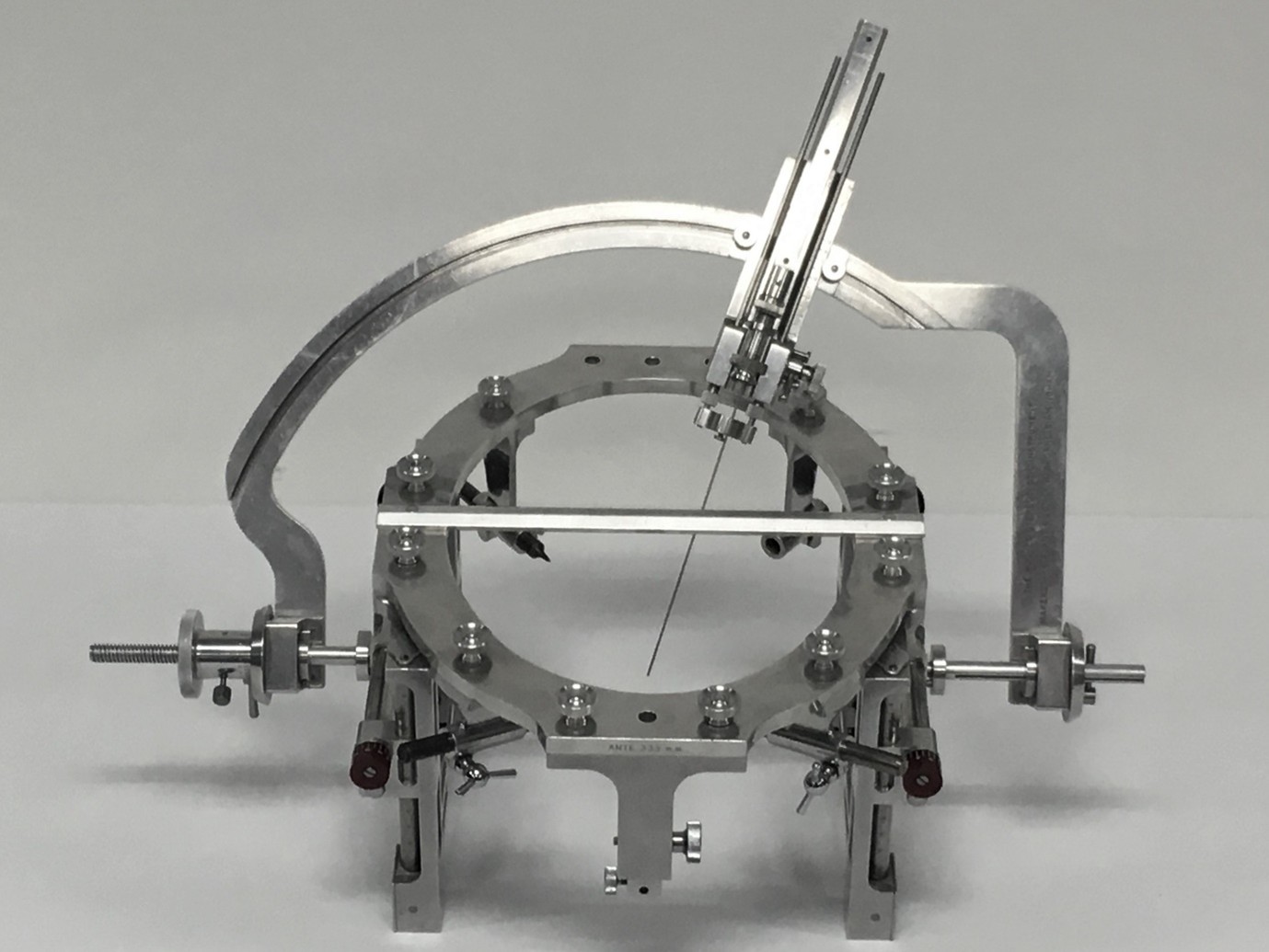Brainstorming Surgery
Mapping Minds with Precision

The medical industry has evolved significantly over the past century - especially with the introduction of advanced imaging and new techniques. The stereotactic frame, a key tool in neurosurgery which was refined by New Zealand surgeon, Graeme Macdonald, serves as a prime example of this evolution. The stereotactic frame is part of the collections of the Ernest and Marion Davis Library in the grounds of Auckland Hospital.
The stereotactic frame is a precision tool used to guide neurosurgical instruments deep into the brain. Born from early 20th-century innovation, the stereotaxic system was first devised by Horsley and Clarke in 1908 and refined for safe and effective application in human neurosurgery. The stereotactic frame on display at the Ernest and Marion Davis Library was one later developed and refined specifically for the surgical treatment of Parkinson’s by Graeme Marlow Macdonald - a highly skilled New Zealand neurosurgeon – working alongside his mentor Brodie Hughes.
While patients today are still awake during neurosurgery, the stereotactic frame has progressed from a cumbersome apparatus attached on a patient’s head, to a more lightweight and compact model. Whilst in the past x-rays were relied on heavily, more advanced digital imaging technologies – such as MRIs - and robotics have been integrated to enhance precision and 3D visualisation. These evolutions have, over time, increased patient comfort through shorter procedures, less pain, and a minimised risk.
Beyond its physical evolutions, the stereotactic frame had a profound social impact. Prior to its invention, many people diagnosed with Parkinson’s disease had faced progressive disabilities. Surgery made possible by use of the frame, helped to restore independence to many sufferers. Through enhanced accuracy, visualisation and navigation within deep brain structures, the frame has over time contributed to overcoming challenges in neurosurgery and brain treatment. This eventually marked a broader shift in neurosurgery away from heavy, inaccurate equipment and methods to quicker and more precise procedures.






